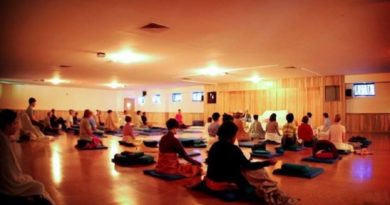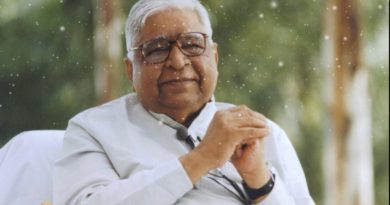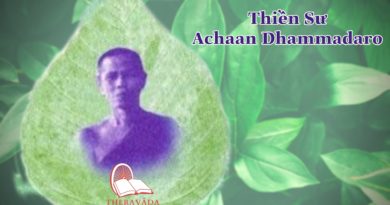Introductory Videos
MAIN CONTENT
- Introduction to Vipassana Meditation Technique
- Vipassana Courses
- Practice of Vipassana
- Discourse on Morality (Sila)-First Step of Vipassana Meditation (Hindi)
- Discourse on Concentration (Samdhi)-Second Step of Vipassana Meditation (Hindi)
- Natural Respiration as a Tool to Explore the Mind (Hindi)
- Importance of Right Concentration (Hindi)
- Discourse on Purification of the Mind-Third Step of Vipassana Meditation (Hindi)
- Realizing the Truth (Hindi)
- Vipassana Meditation: Morality, Concentration & Wisdom (English)
- Vipassana Meditation in Daily Life
- Vipassana in Business
- Address By Mr. S. N. Goenka at the United Nations
Introduction to Vipassana Meditation Technique
What is Vipassana Meditation
Principal teacher Mr. S. N. Goenka explains what is Vipassana meditation and its various aspects.
Hindi:
English:
Vipassana Meditation: Science of Mind & Matter
In this discourse, Mr. S. N. Goenka explains Vipassana meditation as a science of mind and matter, its universal non-sectarian nature and its relevance to the society.
Vipassana Meditation-An Art of Living
This video contains historical background of Vipassana meditation, course structure and experiences of students. It also contain discourses by Mr. Goenka explaining what is Vipassana meditation and his own life story followed by series of questions & answers.
Vipassana Courses
Documentary on the 10-day Vipassana Course Structure (English)
This short film contains information on introduction of Vipassana Meditation, Vipassana International Academy and course structure of a 10-day Vipassana course.
Islands of Dhamma (English)
This 42-minute documentary film is a tour of prominent Vipassana centers worldwide. The film was produced in 1995. After 1995, many centers have been established at various locations. As of 2016, Vipassana courses are conducted in 170 centers and 132 non-centers location around the world.
Hill of Dhamma
Hill of Dhamma details the proceedings of a 10 Day Vipassana course at Dhammagiri, Igatpuri. It showcases Dhammagiri, the principal centre of Vipassana Meditation and explains how a basic Vipassana course progresses through its 10 day period.
English:
Hindi:
Experiences of Vipassana Meditators (English)
In this video, recorded at Dhamma Dipa meditation center, UK, course participants share their experiences after 10-day Vipassana course.
Miracles of Faith-Experiences of Students after Vipassana Course (English)
Practice of Vipassana
Discourse on Morality (Sila)-First Step of Vipassana Meditation (Hindi)
In this discourse, Mr. Goenka emphasize importance of walking on the path of Dhamma and explains sila (morality): first step on the path of Dhamma.
Discourse on Concentration (Samdhi)-Second Step of Vipassana Meditation (Hindi)
In this discourse, Mr. S. N. Goenka explains importance of natural breath as an object of concentration.
Natural Respiration as a Tool to Explore the Mind (Hindi)
In this discourse, Mr. S. N. Goenka explains how natural breath is closely related to our emotions and can act as a tool to understand truth pertaining to oneself.
Importance of Right Concentration (Hindi)
In this discourse, Mr. S. N. Goenka explains difference between ‘Concentration’ and ‘right concentration’, i.e. concentration based on purity of the mind.
Discourse on Purification of the Mind-Third Step of Vipassana Meditation (Hindi)
In this discourse, Mr. S. N. Goenka explains relation of mind and bodily sensations and how this science helps us in purification of the mind.
Realizing the Truth (Hindi)
In this discourse, Mr. S. N. Goenka explains how Vipassana helps to remove impurities at the depth of the mind. He further describes this ancient technique of India through words of many renowed saints.
Vipassana Meditation: Morality, Concentration & Wisdom (English)
In this discourse, Mr. S. N. Goenka explains what is Vipassana meditation and how a Vipassana course works.
Vipassana Meditation in Daily Life
Walking the Universal path of Dhamma
In this discourse, Mr. S. N. Goenka explains universal teaching of pure Dhamma and how this helps cure universal malady of the humankind.
Understanding Vipassana & Applying it in Daily Life
In this discourse, Mr. S. N. Goenka explains what is Vipassana and how to apply it in daily life to live happily & peacefully.
Tranformation through the Practice of Vipassana Meditation
In this discourse, Mr. S. N. Goenka explains transformation of an individual from misery to happiness through practice of Vipassana meditation.
Vipassana in Business
Vipassana in Business, being in touch with your Inner Leader
In 2009 a short film was produced that describes how senior business leaders in India from across industries & sectors cope with uncertainty and change in a challenging market environment. In a series of candid interviews, senior executives discuss how the practice of Vipassana meditation enables them to more effectively manage their own stress, increase employee engagement and productivity, face the pressures of competition, and make decisions from a base of personal wisdom and authenticity.
Vipassana Meditation: Harmony in Business
(Copyright: dhamma.org) In the Spring of 2002 Mr. Goenka conducted the first course especially for business executives and government officials following a conference held in New York City on “Spirituality in Business.” Harmony in Business is a short film about this conference, Mr. Goenka’s comments during the conference and interviews with participants after the meditation course is available in English.
Address By Mr. S. N. Goenka at the United Nations
In late August 2000, Mr. S. N. Goenka participated in the Millennium World Peace Summit—a gathering of 1000 of the world’s religious and spiritual leaders, held at the United Nations under the auspices of Secretary-General Kofi Annan. The purpose of the meeting was to promote tolerance, foster peace, and encourage inter-religious dialogue. With the many different viewpoints represented, the potential for disagreement was strong. In his presentation to the delegates, Goenkaji tried to highlight what they, and all spiritual paths have in common: the universal Dhamma. His remarks were received with repeated ovations.
Source: https://www.vridhamma.org




![Videos [khóa Thiền Vipassana 2017] 5. Kinh Ahara (phần 3) | Thiền Sư U Jatila 4 5 8](https://satima.net/wp-content/uploads/2020/07/5-8-390x205.png)


